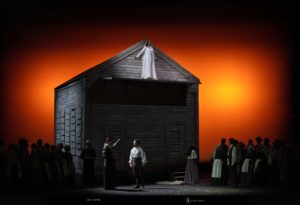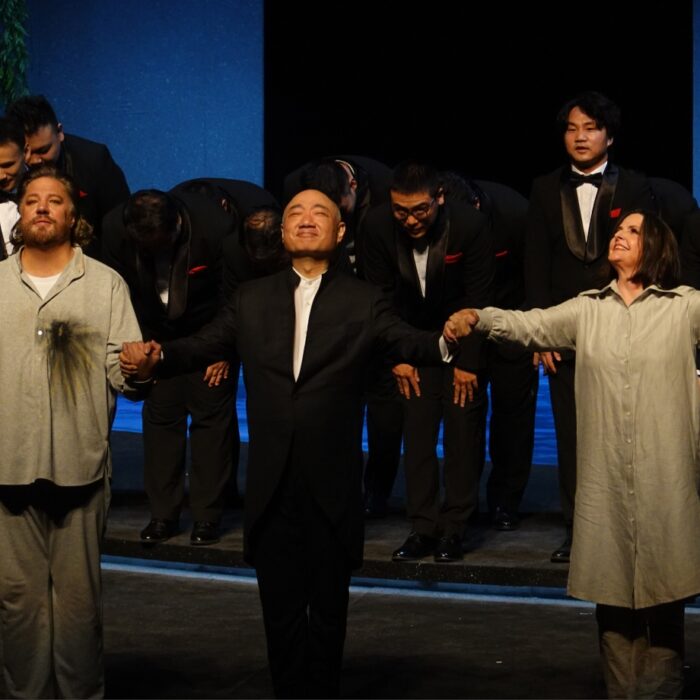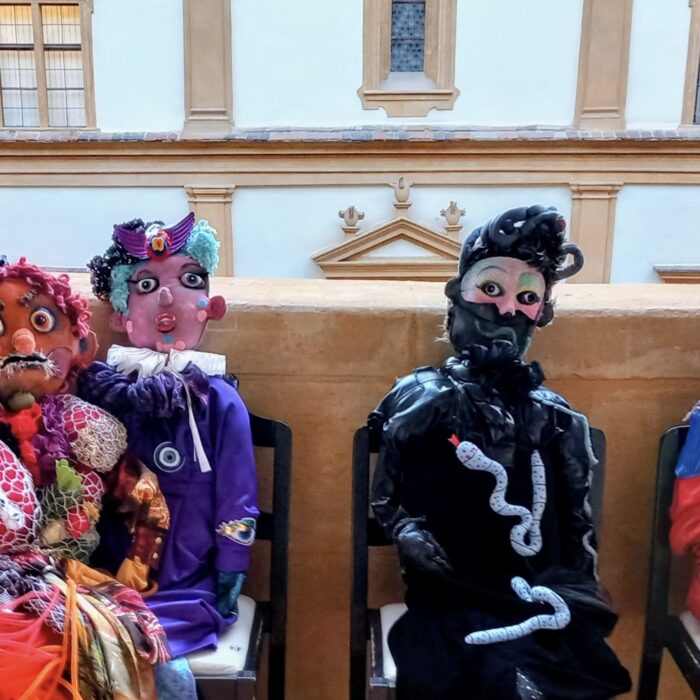
Teatro Real de Madrid 2022-23 Review: La Sonnambula (Cast A)
Nadine Sierra Shines in Bellini’s Famed Work
By Mauricio VillaOn Jan. 2, 2023, American soprano Nadine Sierra outshone the rest of the cast of “La Sonnambula” due to her beautiful dark Lirico-leggera voice, her incredible thrilling high notes up to high F, a piercing projection and a strong, believable characterization of the weak Bellini heroine.
Despite of her astonishing higher register, her voice is bigger and darker than the sopranos that are usually heard in this role but that did not stop her from delivering a showcase of complicated scales, roulades and perfect trills, although the tempi in the complicated coloratura sections was abruptly decreased, as it was the tempi in the cabalettas ”Sovra il sen…” and “Ah! Non giunge.”
Her opening lines: “Care compagne” showed the richness of her timbre, her harmonics, her wise use of coloring the voice and dynamics. Her voice, although with a marked vibrato, navigated easily through the long legato lines of her opening aria “come per me sereno”, and she accomplished perfectly with the vocal pyrotechnics of the cabaletta “Sovra il sen” including the Callas variations with a staccato E flat and a strong long sustained E flat that closed the piece. She was really convincing as the dolent heroine in the duet “Son geloso del zefiro” but portraying as well a strong personality giving more layers to a character which is delineated quite plain and simple.
She was convincing and emotional in her first sleep-walking scene at the end Act one by her acting and the different pallet of colours she used in her vocal line, and her strong high Cs could carry easily over the soloist, chorus and orchestra in forte during the first act closing concertante. She delivered a strong, long sustained high E flat to conclude the act. The highlight of her performance, as it should be in this opera, was her final long sleep-walking scene “… Ah! non credea mirarti… ah! Non giunge!” where the soprano showed once more her exquisite vocal line, her mezza voce and piannisimi and her vocal pyrotechnics on the lively cabaletta.
She concluded the opera with an exciting and impossible high F. It is incredible the commitment and the stagecraft of Sierra that offered a strong, believable characterization of Amina following the concept of the stage director Barbara Lluch in an opera whose libretto lacks dramatism and rhythm.
Young Tenor Shines
Young tenor Xavier Anduaga portrayed the role of Elvino. The Spanish tenor posses a beautiful warm timbre with mesmerizing projection. His voice rings in your ears and the volume increases as he climbs up to his higher range. His legato lines are fluid and long, but he sacrifices his diction and therefore some consonants are lost and most vowels have the same sound. Although his diction in his first recitative “Perdona o mia diletta” was impeccable and his first B flat in ”il padre” exciting, it was during “Prendi l’anel ti dono” were his diction was lost, his consonants inaudible and just an even common vowel. He was able to sing amazing crescendos and diminuendos and therefore he sang all the written dynamics of his opening number with exquisite mezza voce, soaring pianissimo and thrilling crescendos.
His high Cs in “Tutto ah! Tutto in questi instante” were thunderous and secure, although the attack of the high notes is not always clean as he uses appoggiatura breaking the Bel canto style.
The duet “Son geloso del zefiro” accomplished the same deficiencies in diction and his dubious attack of high notes. His singing gives the impression that he is just focusing on legato and voice production. He could easily navigate through the high tessitura of the duet, which demands singing between A natural and high C constantly. He sang the last section: “pur nel sono” with a beautiful soaring mezza voce and delivered a strong final high C along the soprano.
His thrilling strong voice makes him menacing and aggressive in the confrontation scenes where he despises Amina during the first act concertante and his second act aria ”Tutto è sciolto”. But his deficiencies in the diction, as well as unclean coloratura, were present again during the mentioned second act aria. He sang strong B flats and B naturals, neglecting the vocal line and clean scales, and all his vowels had a common open sound. His timbre is beautiful, his projection amazing and his high notes are ringing and excited, but singing Bel canto demands singing legato with clear diction and clean coloratura, and this is where the tenor fails. It is due to mention the mezza voce high C that the tenor emitted at the end of the quartet “Lisa mendace…” in Act two.
Cast Call-Outs
The Italian bass Roberto Tagliavini who sang the role of Count Rodolfo is a habitual in Bel canto titles at Teatro Real where he has participated in “I Puritani,” “Norma,” “La Cenerentola” or “Lucia di Lammermoor.” He possesses a lyric dark sound completely even from low to high. He sang his opening aria ”Vi ravviso” with expansive legato lines and exquisite mezza voce. His voice did not carry well over the orchestra in forte in his E flats in the cabaletta “Tu non sai…” but he accomplished good with the several but short interventions that the bass has along the opera.
The Spanish soprano leggera Rocio Perez sang the role of Lisa with her crystalline bright timbre and incredible high notes. She sang effortlessly her opening aria “Tutto e festa” with secure clean attacks of the high Cs and soprano introduced her own beautiful variations on the second verse, including a soaring high E flat. Her voice adapts easily to the long Bellini lines. Her second aria “de’ lieti auguri” was a showcase of staccato high notes, top ringing high Cs and E flats and a conclusive high F in alt. All the sopranos, in both casts of this “Sonnambula,” delivered a sustained high F, an extremely high note that is rarely heard in opera houses.


